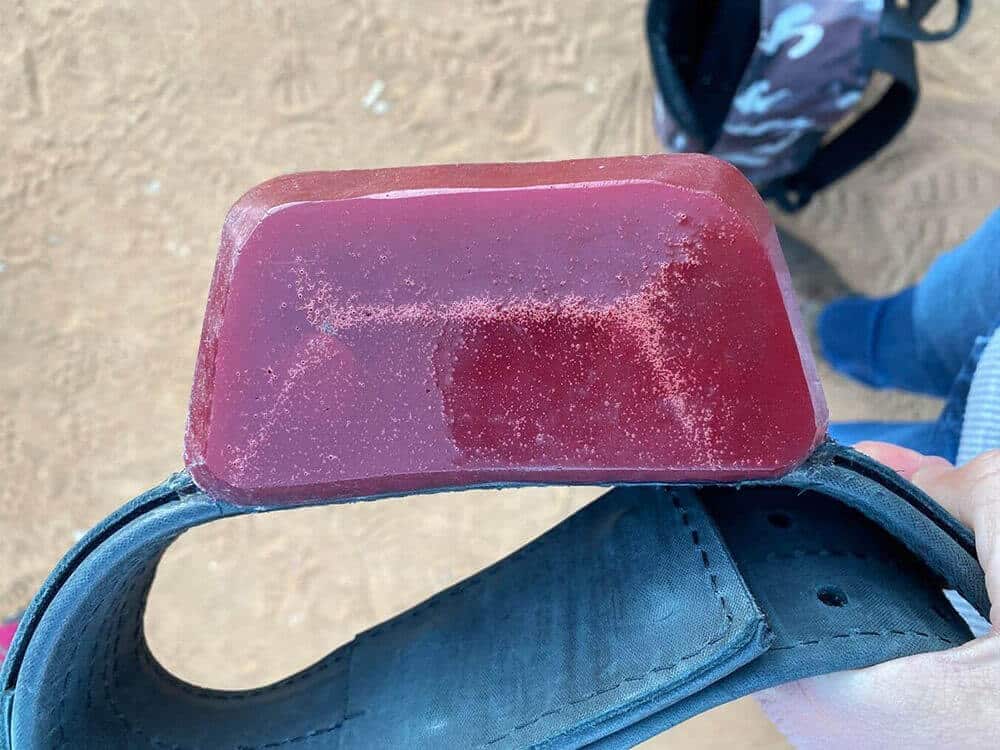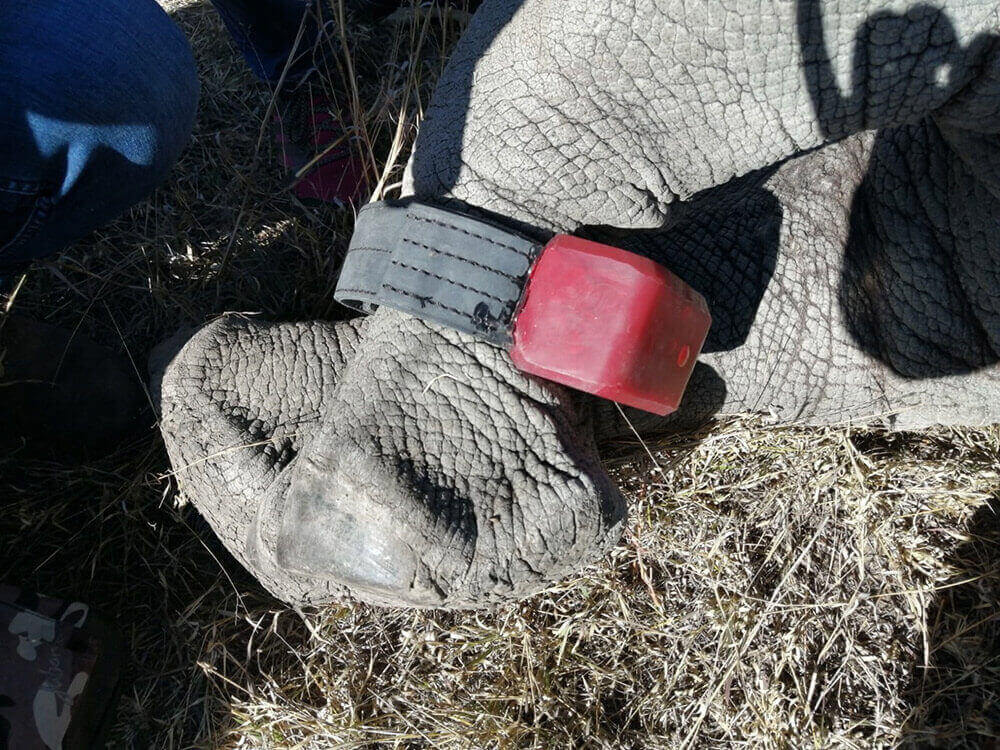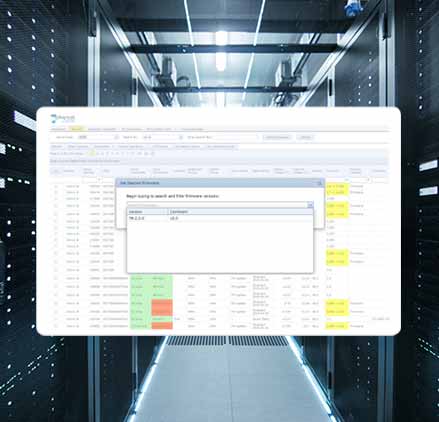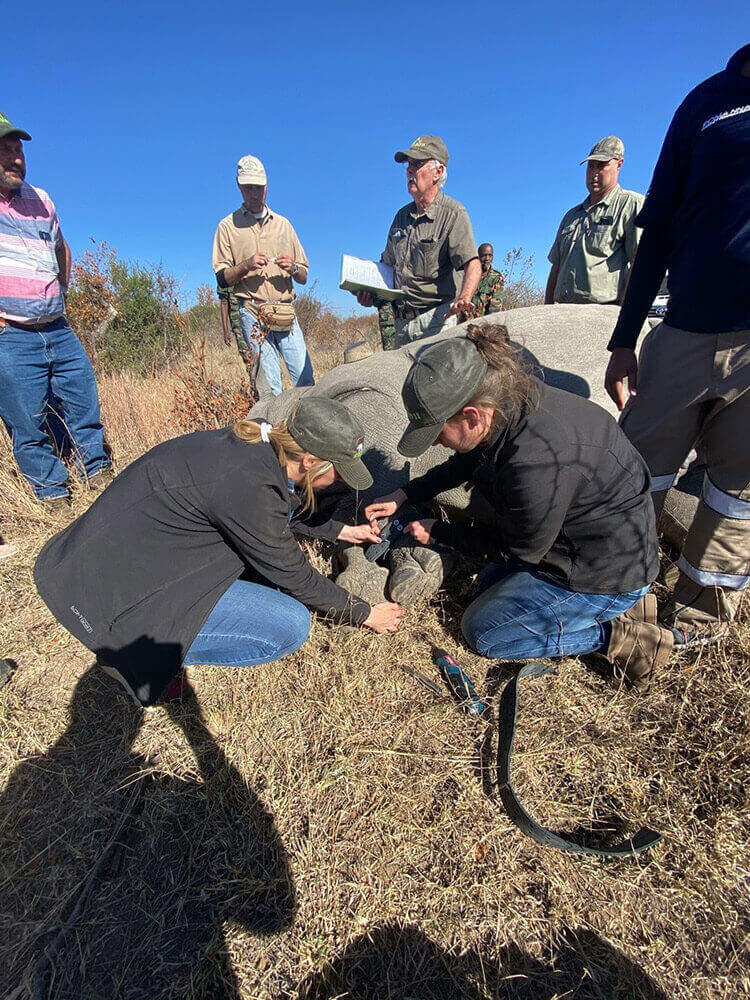Rhino 911 – GPS Tracking for Poaching Prevention
In partnership with Rhino 911, a not-for-profit organization providing helicopter rescue to injured or orphaned rhinos due to poaching and other injuries, TG Tracking is using the Oyster2 battery-powered GPS and Telematics Guru to help prevent poaching in South Africa.
Poaching and Habitat Destruction
According to TRAFFIC, the wildlife trade monitoring organization, South Africa is home to about 80 percent of the world’s 29,000 rhinos.
Though 2019 is the third year in a row the number of rhinos poached in South Africa has dropped—from a high of 1,215 in 2014—African rhinos remain under severe threat from poaching and habitat destruction.
For these reasons, very few African rhinos now survive outside of protected areas and sanctuaries.
Organized poaching groups are also using increasingly sophisticated methods to locate and track rhinos, including helicopters, night vision equipment, and powerful veterinary drugs.
Poaching Prevention with the Oyster2
In addition to reducing demand for rhino horns, conservationists are implementing proactive and preventative anti-poaching technologies to protect rhino populations across Africa.
Sprawling across 12,500 acres, Mziki Safari Lodge is a private reserve home to “four of the big five” animals of Africa – Elephant, Buffalo, Rhino and Leopard. For anti-poaching rangers and farm managers, that’s a lot of ground to cover.
Traditional battery-powered GPS tracking devices are often plagued by the same short fallings:
- Battery-life – Batteries need to last years, not months, without sacrificing the frequency of updates.
- Price – Devices need to be affordable so not-for-profit organizations can deploy at scale.
- Reliability – Devices need to be reliable due to the critical nature of this use case.
- Robustness – Due to the nature of Rhinos, the device needs to be able to withstand their destructive movements within their natural habitats.
TG Tracking required a robust, flexible, and most importantly, reliable battery-powered GPS tracking solution to provide anti-poaching units and farm managers with more than just life-saving location tracking.
With industry-leading battery life, a high-precision GPS/GLONASS positioning system, built-in battery-life management, and a 3-Axis accelerometer, TG Tracking began trialling the Digital Matter Oyster device in 2017.
Designed for location tracking, behavior monitoring, theft recovery, and more, the Oyster2 is installed or concealed on, or in, all sorts of assets – mainly industrial ones, like vehicles, trailers, containers, and more. You know – normal stuff.
But when it comes to tracking rhinos… well, things get a bit more complicated.
How do you secure a device to a rhino?
Fitted around the Oyster2, TG Tracking developed a custom collar, enhancing the device’s battery-life, temperature tolerance, and ensuring maximum comfort for the animals.
TG Tracking’s unique resin potting houses the Oyster2 and a custom SAFT D-Cell battery-pack, which enables longer battery-life and extreme temperature tolerance.
TG Tracking’s unique 3-layer structure and light-weight internal webbing ensures sufficient strength and durability, and the collar’s soft, rolled edges also protect the animals from irritation.
Installation
Prior to fitting animals with the custom collars, the Oyster2 is provisioned using our Device Management platform, where the frequency of location updates, geofences, accelerometer settings, and other tracking parameters are carefully set.
In order to protect both farm managers and the animals themselves, the rhinos are first sedated from helicopters and safely guided to a clear, unobstructed area.
Collars are attached to the rhino’s front legs, as seen below.

The time of collaring, veterinary information, and more information on the animal is captured and saved in Telematics Guru. The rhinos are then closely monitored as they regain movement.
Location Tracking
Anti-poaching units monitor the rhino’s locations 24 hours a day. Location data captured by the Oyster2 is also used to understand daily routes and distance travelled, areas of grazing, and other general behavioural patterns to ensure high-traffic areas are always protected.
Built-in Battery Life Monitoring
The Oyster2’s Coulomb Counter is used to calculate highly-accurate remaining battery-life predictions. Timely low-battery alerts are sent to all units, ensuring ample time to schedule replacement.
Geofencing
Geofencing works alongside location tracking by creating a virtual boundary around specific areas of the park. If animals move beyond these boundaries, units are immediately alerted.
Geo-fence downloads and alerting allow the farmers to be informed if the Rhino has moved out of its usual behavioural locations – possibly due to poaching.
Movement and No-Movement Alerts
The Oyster’s 3-Axis Accelerometer enables smart movement-based tracking features. If the rhino reaches a certain speed for a set amount of time, a “running alert” is triggered, alerting units of a possible disturbance on the grounds.
Immobility, or “rhino down” alerts are also configured and immediately triggered if the animal stops moving for a configurable amount of time.
Recovery Mode
Recovery mode is available on the Telematics Guru tracking app, a one-touch button which activates live-tracking at 30 second intervals, allowing units to follow the rhinos path in real-time if injury or poaching is expected.
Reporting
KML (Keyhole Markup Language) files are available and exported from Telematics Guru weekly to plot and display geographic data on third-party GIS software.
Conclusion
TG Tracking track Leopards, Elephants as well as Rhino using Digital Matter’s wide range of devices.
“Other GPS tracking devices do not match the reliability and robustness of Digital Matter’s devices,” says Nick French, Founder, TG Tracking.
“Working with Digital Matter and their support team has been a key reason for our success with this project. There is often lots of testing and troubleshooting that happens in these unique cases, and Digital Matter have been part of this process every step of the way.”
Image: Jenny and Leigh from Digital Matter securing the Oyster2 and custom collar to a rhino in South Africa.
Looking for a similar solution? Contact us today.



